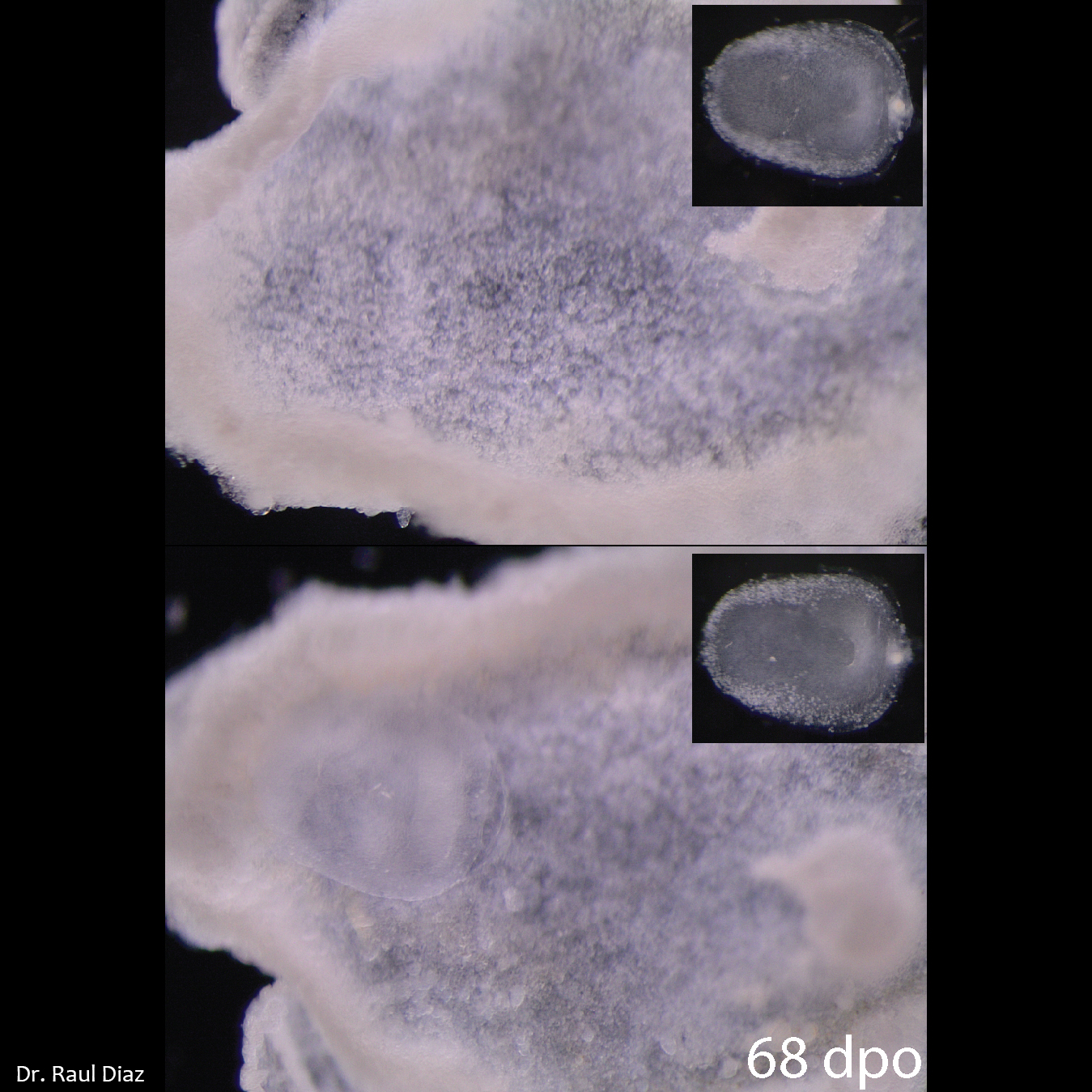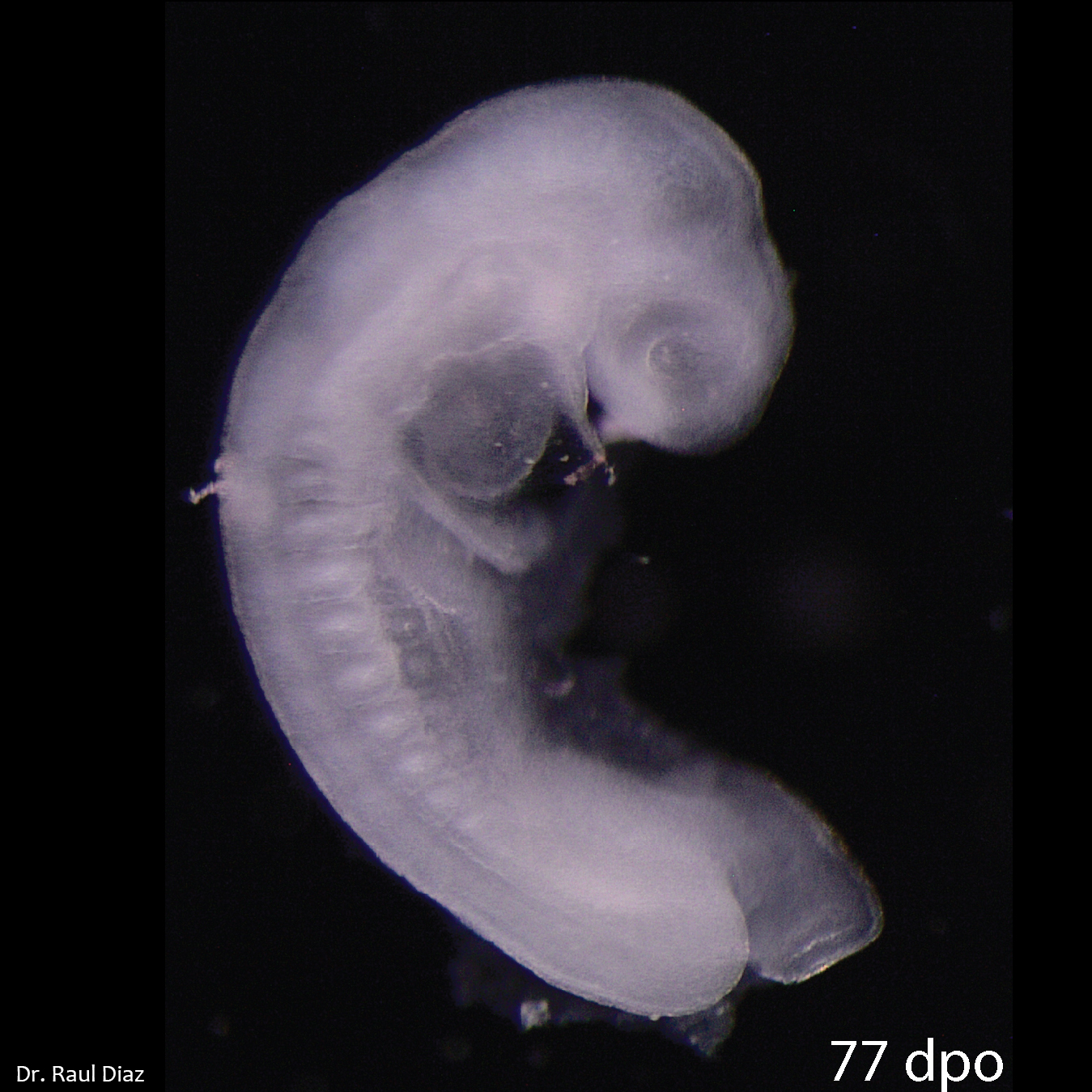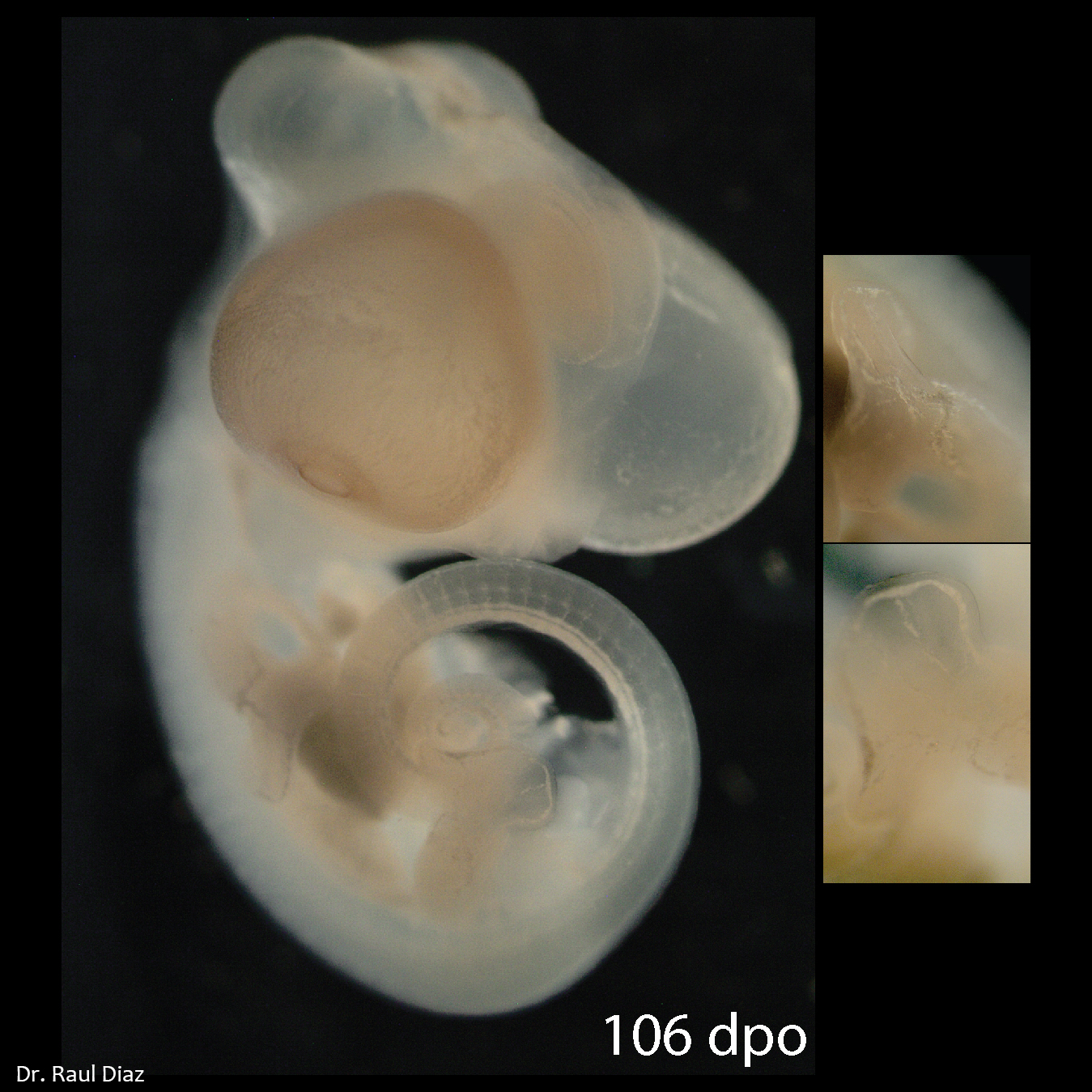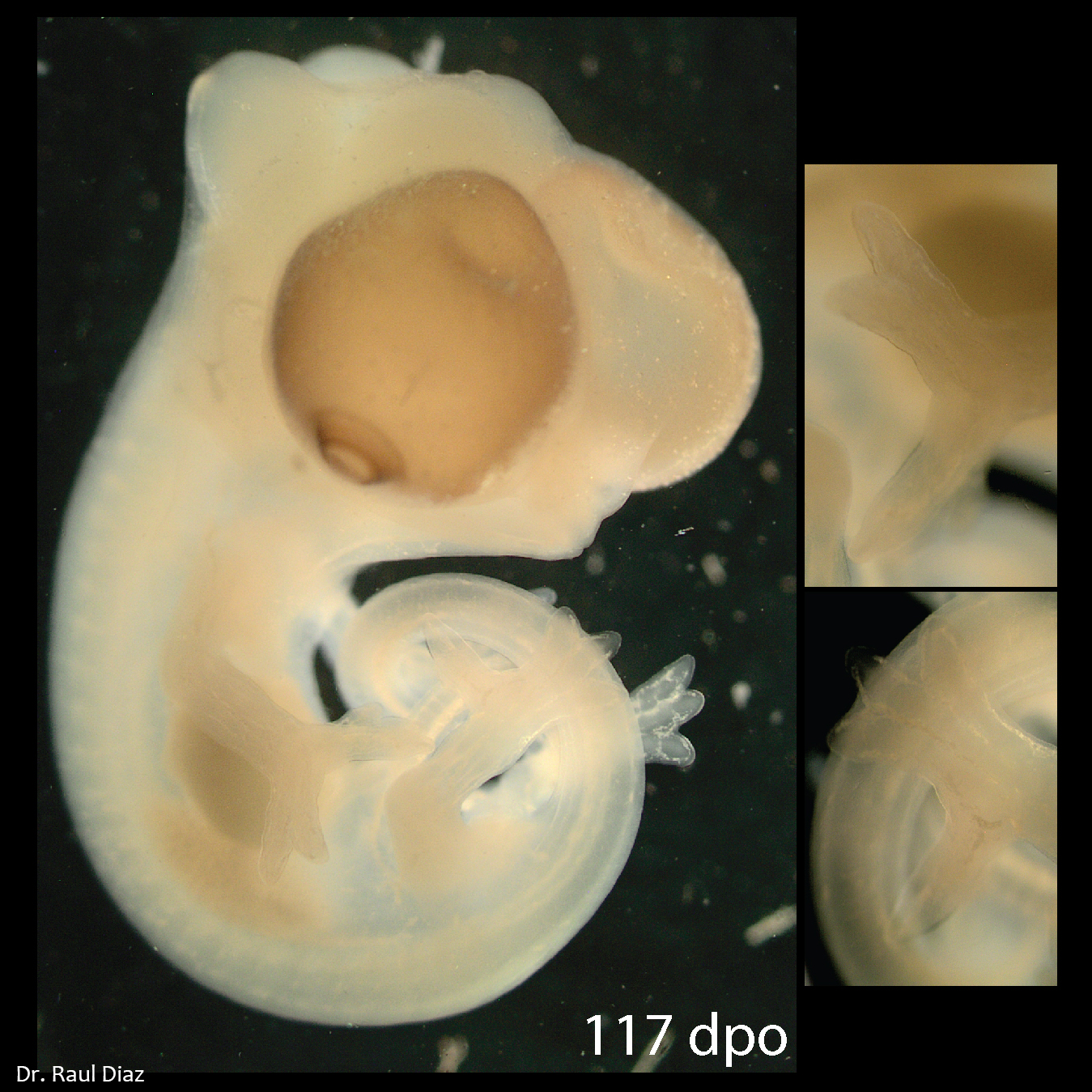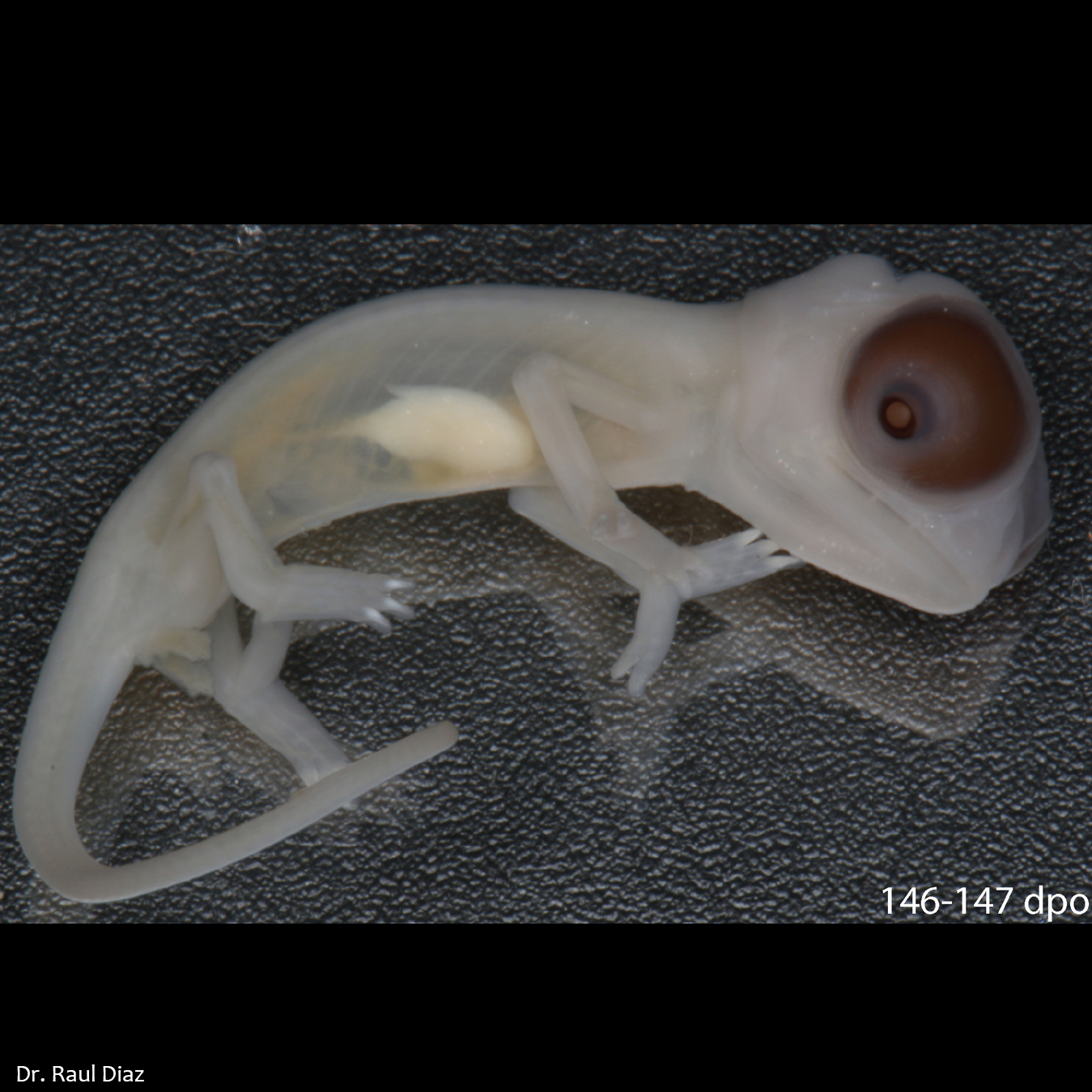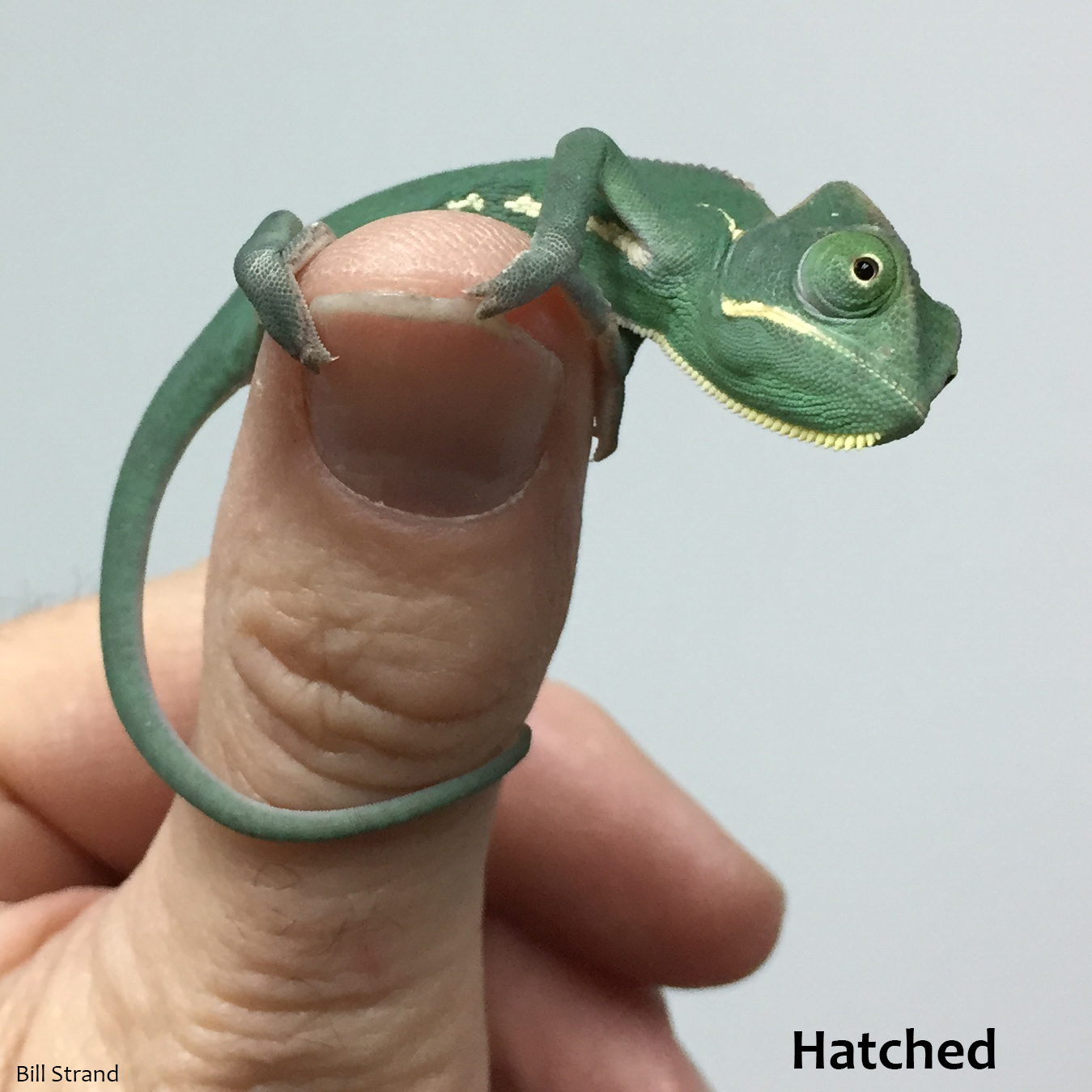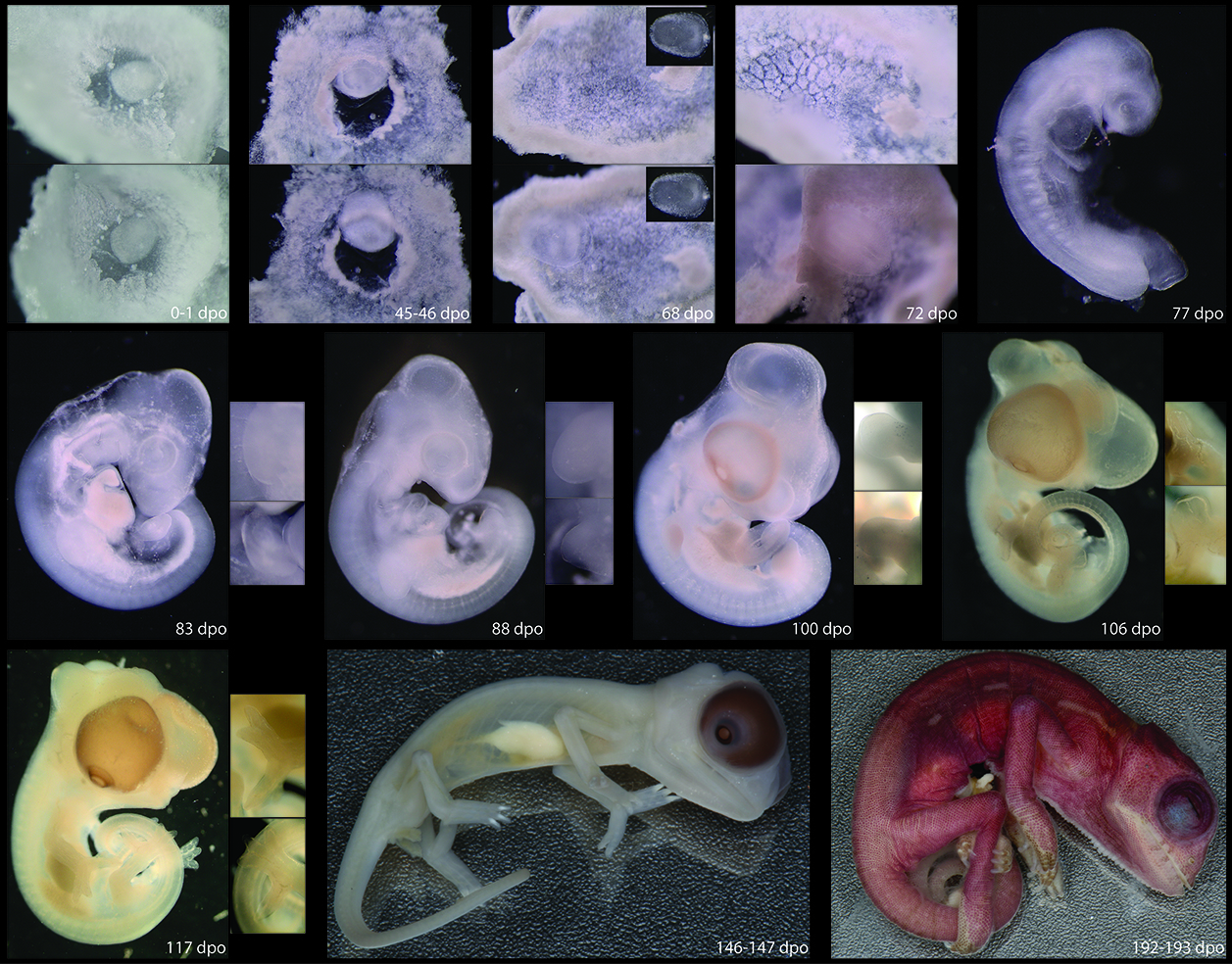Some chameleons lay eggs and some give live birth. But inside the egg or the mother the exact same process is going on. Cells are dividing and forming every part of a little baby chameleon’s body. All through this process the mother is taking in nutrition and feeding the factory inside that will get each baby what they need to be strong and survive the world.
But just what is going on inside that egg? Today we are guided by Dr. Raul Diaz who is a research scientist and has done an indepth study of embryonic development of the Veiled Chameleon.
Dr. Diaz came onto the podcast and led us through each stage. Listen to the interview while reviewing each of the images below. Many of the stages below also have audio snippets from the interview to reinforce the concepts.
Episode 106: Chameleon Embryonic Development with Dr. Raul Diaz – the full interview.
Bill Strand & Dr. Raul Diaz
Chameleon Embryonic Development
0 to 60 days after laying
In this initial stage the embyro is undergoing a process known as “gastrulation” where it is becoming a multi layered organism. Dr. Diaz found that this stage was drawn out for a longer than expected time in the Veiled Chameleon. For the first two months of development very little is going on visually. Cells are dividing and there is activity. It is just happening at a slow rate. A powerful microscope was necessary to determine what was going on. It is around this time that the chameleon is transforming from a ball of cells and starts developing the three primary germ layers: Ectoderm, endoderm, and mesoderm.
A germ layer is simply a layer of cells. (It has nothing to do with the germs that make us sick – just a word used for different purposes.)
Each of the three germ layers will go on to form different parts of the chameleon’s body.
The ectoderm will form the skin, brain, and nervous system.
The endoderm will form the gut tract and internal organs.
The mesoderm will form the muscle, skeleton, and circulatory system
Listen to Dr. Diaz discuss gastrulation.
Dr. Raul Diaz
Gastrulation
60 to 90 days after laying
The next major stage in embryonic development is the formation of the central nervous system. It is at this point that the two halves of the body start forming.
Dr. Diaz talks about the central nervous system developing
Dr. Raul Diaz
The Central Nervous System
90 days after laying
Around 90 days of development the veiled chameleons will start to grow buds that will become the limbs.
A very interesting note about this stage of development is that other snakes and lizards are at this stage when the egg is first laid! It takes veiled chameleons 90 days to reach where most lizards start. Dr. Diaz discusses this phenomena.
Dr. Raul Diaz
Delayed Development in Chameleons
106 -117 days after laying
Growth becomes much quicker at this point. And at 117 days we can see the unmistakeable chameleon hands forming!
Dr. Diaz talks about the fascination with chameleon hands
Dr. Raul Diaz
The Formation of Chameleon Hands
106 -117 days after laying
By 146 days we are in the home stretch. Hatching is in about 50 days.
The yolk sac is being used to develop the mid gut and nourish the chameleon. Dr. Diaz shares what is happening with the yolk sac.
Dr. Raul Diaz
The Chameleon Egg Yolk Sac
200+ days after laying: The hatching
The Entire Progression
And at the end of this incredible journey the most amazing creature emerges into the world to start its next stage of life. If we are breeders then we must take seriously our education to be able to give the mother proper nutrition to give the embryo all the nutrients necessary to develop properly. Once the baby hatches we continue that responsibility. The reward is a deep understanding and respect for life.
Discussion: Diapause
A diapause is the condition where the embryo suspends development due to environmental conditions and resumes development when those specific environmental conditions have passed. It is this process that allows the eggs to time their development so they can hatch during the beginning of the wet season, for example.
Breeders can take advantage of diapause to schedule some species to hatch at certain times. In other species, diapause appears to be necessary or the eggs will not hatch. In Veiled Chameleons, Dr. Diaz would not consider the initial 60 day slow development to be a diapause because it happens no matter how perfect the incubation conditions are.
Dr. Diaz discusses diapause
Dr. Raul Diaz
Diapause
Discussion: Temperature Dependent Sex Determination (TDSD)
In some species of reptiles the environmental conditions can determine the sex of the baby incubating. This is known as Temperature Dependent Sex Determination. Sea turtles are a high visibility species where this is in effect. Chameleons are a group where there are sex genes so the sex is determined genetically. But chameleons cannot do anything normal and there is speculation that there still are effects of temperature on determining gender. More study is needed.
Dr. Diaz discusses TDSD
Dr. Raul Diaz
Temperature Dependent Sex Determination

